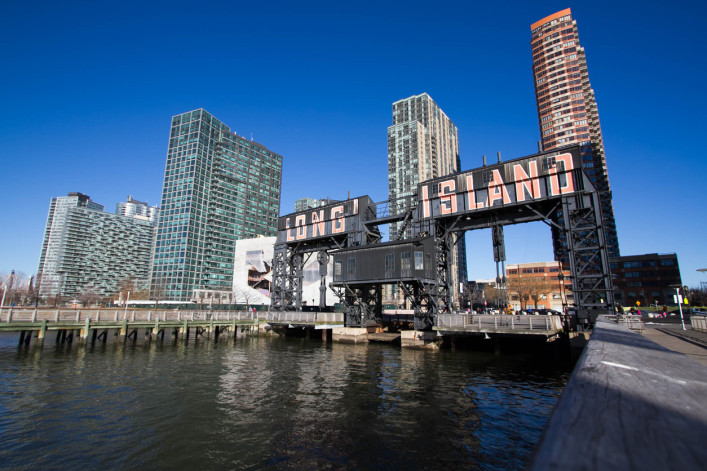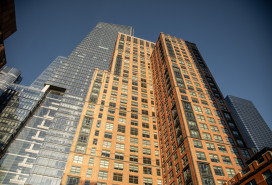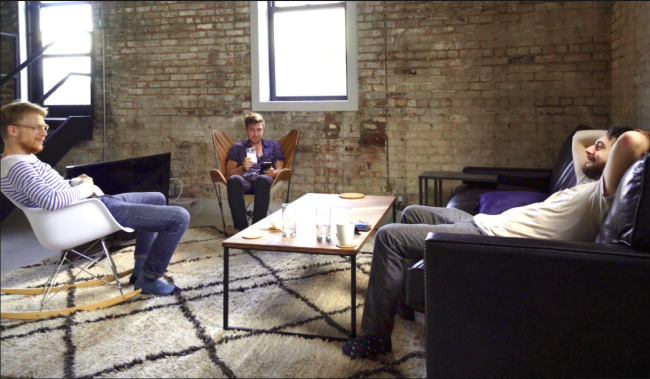Where to live if you're going to work at the new Google, Facebook, Amazon, or Disney offices in NYC

If you think you might be working in tech in New York City in the near future but aren’t sure where, LIC is a safe bet no matter what. Get in now while you can.
iStock
The good news: You've landed a job at Facebook, Google, Amazon, or Disney in New York City—major corporations that are snapping up big chunks of real estate for new offices here.
Now for the bad—or at least challenging news: Unless you already live here, you're joining a wave of new tech workers looking for a place to live in a city that is in the middle of a housing crisis.
And it's only going to get more competitive as the new tech offices open. After scuttling its HQ2 plans in the face of public outcry, Amazon announced plans to open an office for 1,500 employees in Hudson Yards by 2021. Facebook is also setting up shop in Hudson Yards. The company will occupy 1.5 million square feet across 30 floors and three buildings starting this year, in addition to leasing 700,000 square feet at the reimagined James A. Farley Post Office, across from Penn Station.
Downtown, Google is building “Google Hudson Square," a 1.7 million-square-foot campus that will more than double its current NYC workforce of 7,000 over the next decade. Employees may move into the Hudson Street buildings as early as this year, with the Washington Street projected for a 2022 completion. (Note to newcomers: Hudson Yards and Hudson Square are two very different neighborhoods about 20 minutes apart by car.)
Disney is planning a a 1.2 million-square-foot New York HQ for 4 Hudson Square, with as many as 5,000 employees. (That one is a little farther off, with completion expected in about four years.)
All of which is to say, that’s a lot of people who are going to have to live somewhere. So here's a tip: It may seem counterintuitive, but your best bet is not to look for a place to live right where you're going to be working.
That's because the parts of the city getting this influx of office workers are either not very residential (Hudson Square is essentially at the entrance of the Holland Tunnel) or really expensive—Hudson Yards has been called "a gated community for the 0.1 percent" and the neighborhoods adjacent to Hudson Square are Soho, Tribeca, and Greenwich Village—not exactly the areas of the city to find deals on housing. It's no surprise that Tribeca is the most expensive neighborhood in NYC behind Hudson Yards.
So, if you find yourself working at one of the new NYC offices of Google, Facebook, Amazon, or Disney (and you don’t have money to burn), where’s a good place to live? Of course, it depends on what you want and need in a neighborhood. But one aspect pretty much everyone is keen on is transportation and a relatively pleasant commute.
Need expert help finding the perfect apartment in the perfect neighborhood for your new job? Place your search into the capable hands of The Agency, a tech-savvy real estate brokerage that's helped hundreds of Brick Underground readers find their ideal NYC apartments. Bonus: The agents at The Agency are not only a delight to deal with, they will charge a broker's fee of 10 percent of a year's rent on open listings instead of the usual 12 to 15 percent if you sign up here.
Mitchell Moss, director of the Rudin Center for Transportation at New York University, says transit accessibility and connectivity are the major factors that determine where people land. (Living near a train line that takes you straight to work is great, but living near a train line that connects to a reliable transfer to another train or bus can also work. Cobbling together a hybrid commute involving bikes, scooters and walking is another option.)
Moss names the F line as a “vital part of the tech economy”, thanks to its path through Soho, near Union Square and its easy transfer to the A, C, and E lines—which have stops near Google’s Chelsea offices. (Its tech-forward ridership may be why you find yourself more aware of issues with the line than with others.
“Anytime there’s a problem they immediately put it on Twitter and get the attention of the media and MTA leadership,” he says.
And younger members of the workforce like to be near each other. “Young people want to live with other young people,” says Moss. “Smart young people want to be near a rock climbing wall, and have organic and vegan restaurants nearby. They don’t know how to make coffee, but they know how to buy it.”
Moss says the days of recent college grads congregating on the Upper East Side is long gone, at least for those in the tech sector. “If you’re young and smart and have any technical skills you’re living in Brooklyn or western Queens,” he says. “The Upper East Side is a geriatric ward. You need to have had a hip replacement and plastic surgery to live there.”
Don’t meet those “qualifications”? Then check out Brick Underground's top picks for the best New York City neighborhoods to live in if you’re working for Google, Facebook, Amazon, or Disney in one of the companies’ spanking new HQs. (An important note: commute times mentioned here are approximate, and take place in a world where there are no delays—a world fewer and fewer of us seem to be living in. Also: You can live in a neighborhood and be next to the train, or a 10-minute walk from the nearest station, so where your specific apartment is will affect your travel time and if you need to weather the elements on either end of your commute.)
If you work in Hudson Yards
Lots of people are of the opinion that even if they had the money to live in Hudson Yards, they’d choose not to. That aside, you don’t really need to live there, thanks to brand new stop on the 7 train (created as part of the development) that delivers riders right at Hudson Yards, at the base of Thomas Heatherwick’s monolithic Vessel and the shiny luxury mall.
This makes Long Island City a prime spot to live if you work at Hudson Yards; if all goes well with the 7 train, you can make it to work in less than 30 minutes. It’s also a neighborhood with available inventory, thanks to lots of development, so healthy competition could help keep prices in check. It was the fastest-growing neighborhood in the country in 2017 and that means not only residential buildings, but lots of businesses, too, including those rock-climbing facilities and vegan restaurants Moss references. Take note if you're buying: prices here are rising faster than in other parts of the city, according to StreetEasy.
For a similar vibe, Greenpoint in Brooklyn is also an option, with the commute to Hudson Yards a bit longer (about 40 minutes) but still manageable. (The fastest route is to take the G to the 7.)
Another Queens spot to consider, which has a quieter, family-friendly feel (and is likely a bit more affordable) is Sunnyside; the 7 train stops at 46th Street-Bliss Street station and you can get to Hudson Yards in under 40 minutes.
If you must live in Manhattan, you have options. For a neighborhood that attracts a younger demo, check out Kips Bay, where you’ll find nearby nightlife and affordability—in part, because yes, transit access is not stellar). However, you can hop on express bus at 34th Street and be at Hudson Yards in less than 30 minutes. Plus, it’s got a movie theater, a Target, and a Trader Joe’s. (What more could you want?)
"It can be relatively affordable—with a wide variety of housing stock, from walk-up tenements to high-rise towers," says Scott Waldman, a broker at Citi Habitats. "For those who want the security of a doorman building on a budget – some landlords will allow pressurized walls, which is great for roommate shares. Kips Bay is situated right between all the Downtown bars and restaurants and the office towers of Midtown where many people work... It’s a very ‘livable’ community too. There are delis, dry cleaners, pharmacies, gyms, and chain stores throughout the neighborhood. It’s not a huge adjustment from life in a suburban area in terms of convenience."
For the family crowd, consider Hell’s Kitchen, which we named as one of our best neighborhoods for families in Manhattan, thanks to its mix of relatively affordability for larger apartments and promising school options. It’s just north of Hudson Yards and you could live the dream of walking to work.
If you work in Hudson Square
The goal of the 2013 rezoning of Hudson Square was to jumpstart development in the largely industrial and sleepy Downtown area. “Hudson Square is going through transition,” Moss offers diplomatically before adding: “No one in their right mind would live next to the Holland Tunnel. You might as well drink pollution.”
If the ritzy neighborhoods nearby are out of budget, there are numerous areas to consider. Long Island City is yet again a good option, thanks to the power combo of the 7, which hooks up to the 1, which takes you right to Hudson Square (or pretty close, the Houston Street stop.) Depending on your walk to the train, it takes about 40 minutes.
If you want some Brooklyn flavor, it’s probably best to look along the A, C, and E lines, which include a stop at Spring Street, not far from Hudson Square. (Door to door your commute will be around 40 minutes.) While you won’t find any bargains, options include Downtown Brooklyn (which has a lot of new development and potentially negotiable rents), Fort Greene, and Clinton Hill. All are spots where you’ll find well-heeled young professionals, artisanal foodstuffs and buzzy establishments, and in the case of the first two, access to major transit hubs at Borough Hall and Atlantic Terminal/Barclays Center. Yet another option is Prospect Heights, which has a similar scene and is close to the 2 and 3 trains (with an easy transfer to the 1).
For more space for your dollar (or your family), look across the river to Hoboken or Jersey City, where your commuting options include the PATH train or a ferry operated by NY Waterway to make it to Manhattan.
From Hoboken the PATH is your quickest route, getting you to work in about 30 minutes, including a 10 minute stroll from the Christopher Street station.
Jersey City has numerous ferry landings, and the boat ride can be as quick as 10 minutes. The closest ferry landing is at Brookfield Place/Battery Park City, and you can connect to a bus to get to Hudson Square if you don’t want to hoof it the rest of the way.
If you work at the James A. Farley Post Office
What, you’ve never wanted to live across the street from Penn Station and Madison Square Garden? While it’s true that over the next several years, the area will see a massive injection of cash in the form of the James A. Farley Post Office conversion—where Facebook will be doing business—and the 1.6 billion dollar project to overhaul Penn Station and build the new Moynihan Station, it’s not the most charming of New York City areas. (You can’t really call it a neighborhood, right?)
But there is some major transit connectivity happening here: it’s Midtown and near a massive transit hub. Living anywhere on the Upper West Side is a straight shot via the A, C, or E; or 2 and 3 lines right to Penn Station. You could live in Harlem, another spot for affordability that offer space, plus lots of options for dining and culture, and get to work in 30 minutes.
It’s hard to ignore the convenience of the Kips Bay/Murray Hill area just across town to the east. Those express buses will deliver you to work in about 20 minutes, and on a nice day, you could walk in about the same amount of time; biking would be even faster.
To make the Brooklyn scene, East Williamsburg could work. You’ll have to walk to the L, but that line can hook you up with the A, C, and E line; the 2, 3 line; or the N, R, Q, and W line, all of which go directly or close to Penn Station, with a commute of about 40 minutes. (Keep in mind that rents in Williamsburg have hit a record high.)
If being in the most happening spot is of less importance to you, take a look at Forest Hills. With pockets that are downright suburban feeling, as well as lots of conveniences, diversity, and even its own (very cool) music venue, Forest Hills Stadium, this Queens neighborhood offers a quieter pace, space and affordability. Got a family? This might be the place for you! You can grab the E for about a 40 minute commute, or, when you’re rushed and feeling rich, hop the Long Island Rail Road and be at Penn Station in 20 minutes.
Finally, it’s true: Long Island City is also pretty convenient to 34th Street too, with several commuting options taking under 30 minutes.
We suppose the ultimate lesson is that if you think you might be working in tech in New York City in the near future but aren’t sure where, LIC is a safe bet no matter what. Get in now while you can!
You Might Also Like





















